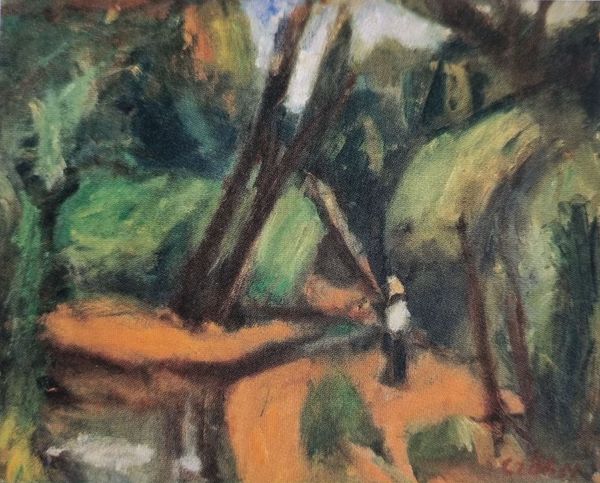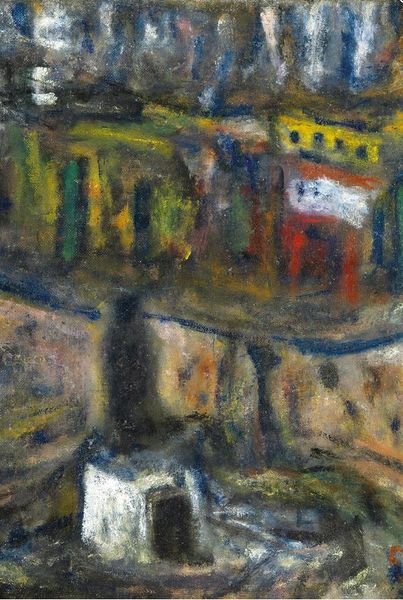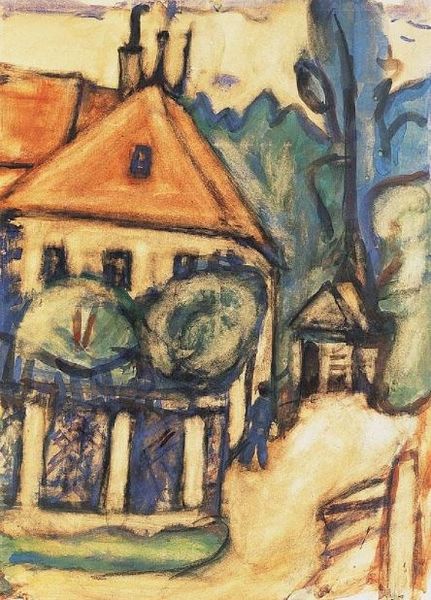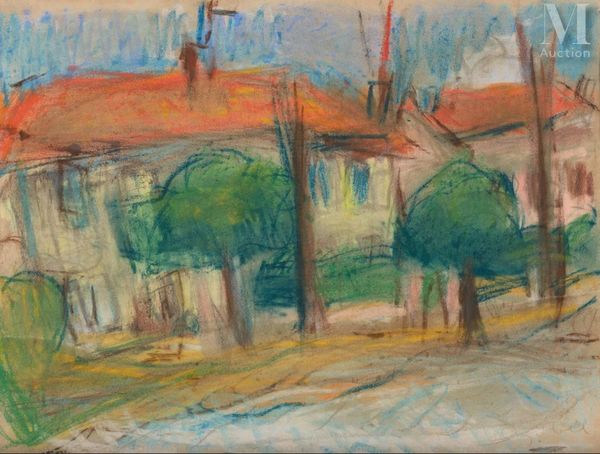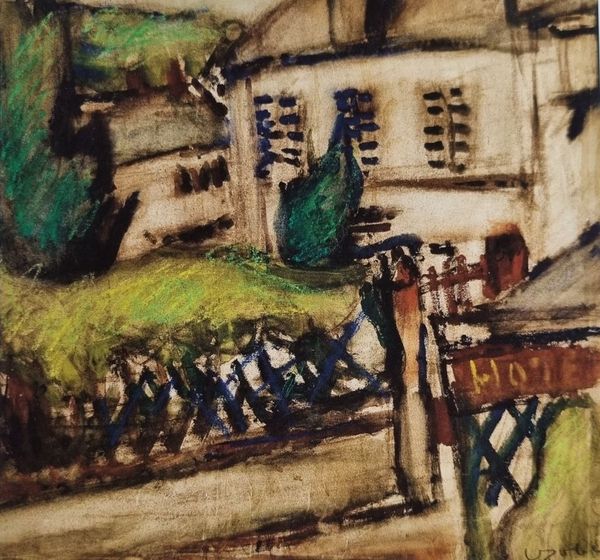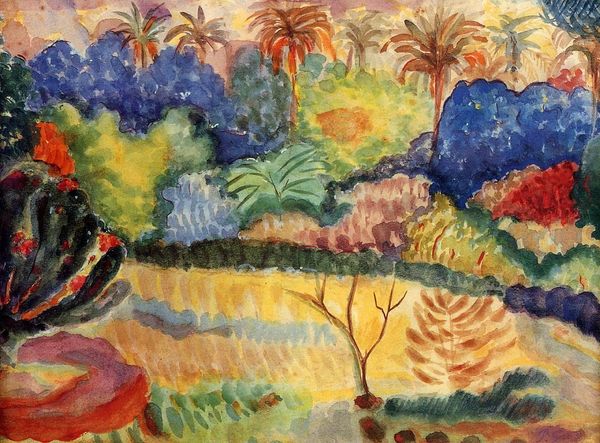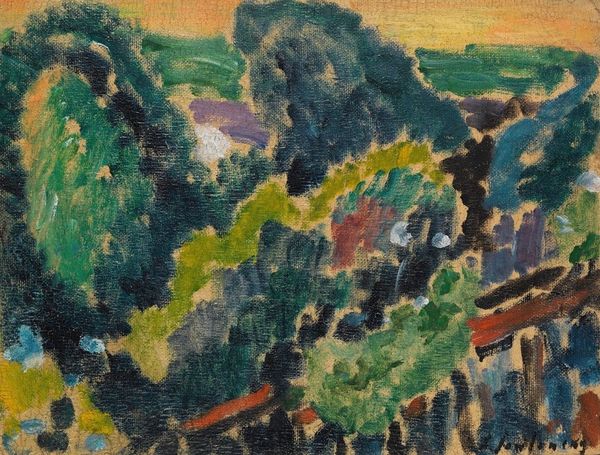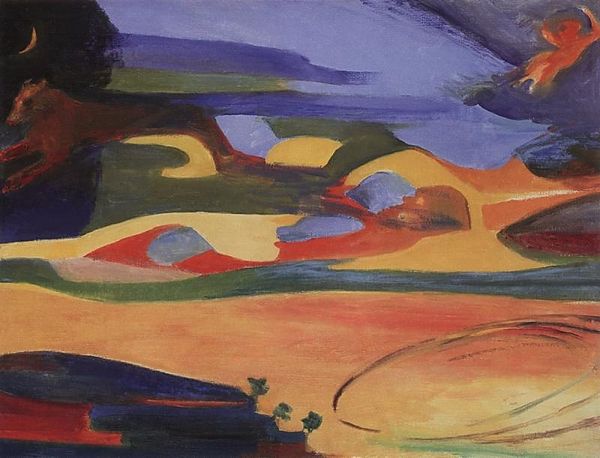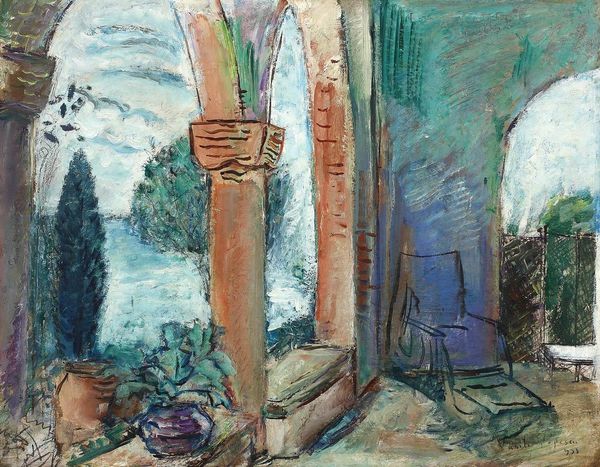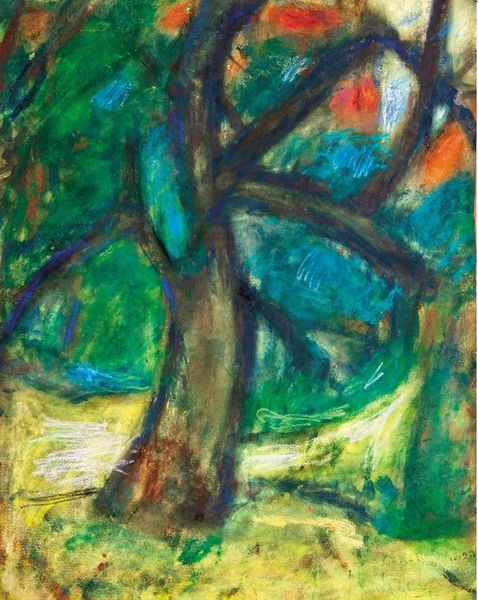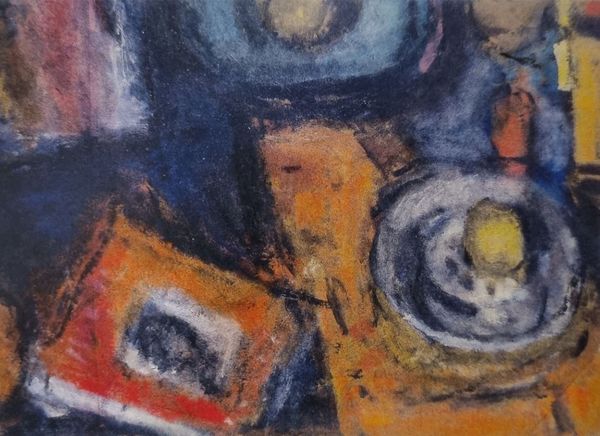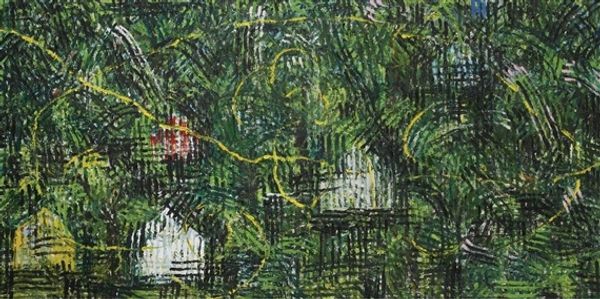
drawing, pastel
#
drawing
#
landscape
#
expressionism
#
cityscape
#
pastel
Copyright: Public domain US
Curator: This piece is "Czóbel Béla 1920 Szentendre," a cityscape rendered in pastel on paper by the Hungarian artist Béla Czóbel. It dates, as the title suggests, to 1920. Editor: My first thought is disorientation. The lines seem to be melting and the colors swirl, it's hard to get a solid sense of space. Curator: Yes, the application of pastel lends a particular texture—almost a fuzziness that deconstructs any sense of photorealism. Note the visible layering and smudging of pigment that underscores Czóbel's process. What materials were accessible to Czobel? Was pastel his preference? Editor: Well, this perspective of a small Hungarian town from a Jewish artist immediately after WWI can’t be ignored. The skewed perspectives read as a society shattered, each tree and building a precarious structure holding on by a thread. It's almost a lament. Curator: It’s an important observation. Considering his Expressionist leanings, Czóbel’s mark-making is quite evocative, a deviation from the then mainstream Impressionistic and Naturalist style. Szentendre was then an important artistic colony for young Hungarian painters; it was, and still is, famous for attracting craftspeople. This also means Czóbel may have directly sourced materials locally. Editor: I agree, that is reflected in his aesthetic, a move away from the dominant social order in European Art towards individuality. The subject matter is an interesting collision of intimacy, of someone who might have lived there among familiar architecture, rendered with very little care for accuracy or detail. Curator: And it makes one question what details were considered important, worth applying, worth emphasizing by Béla? A few dashes of saturated blue here, a stroke of green there. His color palette feels more instinctive than realistic, in a conscious choice of emphasizing only the necessary in the painting. Editor: It certainly provides a compelling glimpse into a particular artist wrestling with modernity in a post-war society through memory and feeling. It also pushes us to investigate more closely this interesting moment of intersection between national identity, trauma, and creativity in the little colony in Szentendre. Curator: Indeed, looking at the artist’s labor through this lens, it appears this piece is not simply about a place, but about Czóbel's intimate processing of a specific place at a very specific historical time.
Comments
No comments
Be the first to comment and join the conversation on the ultimate creative platform.
